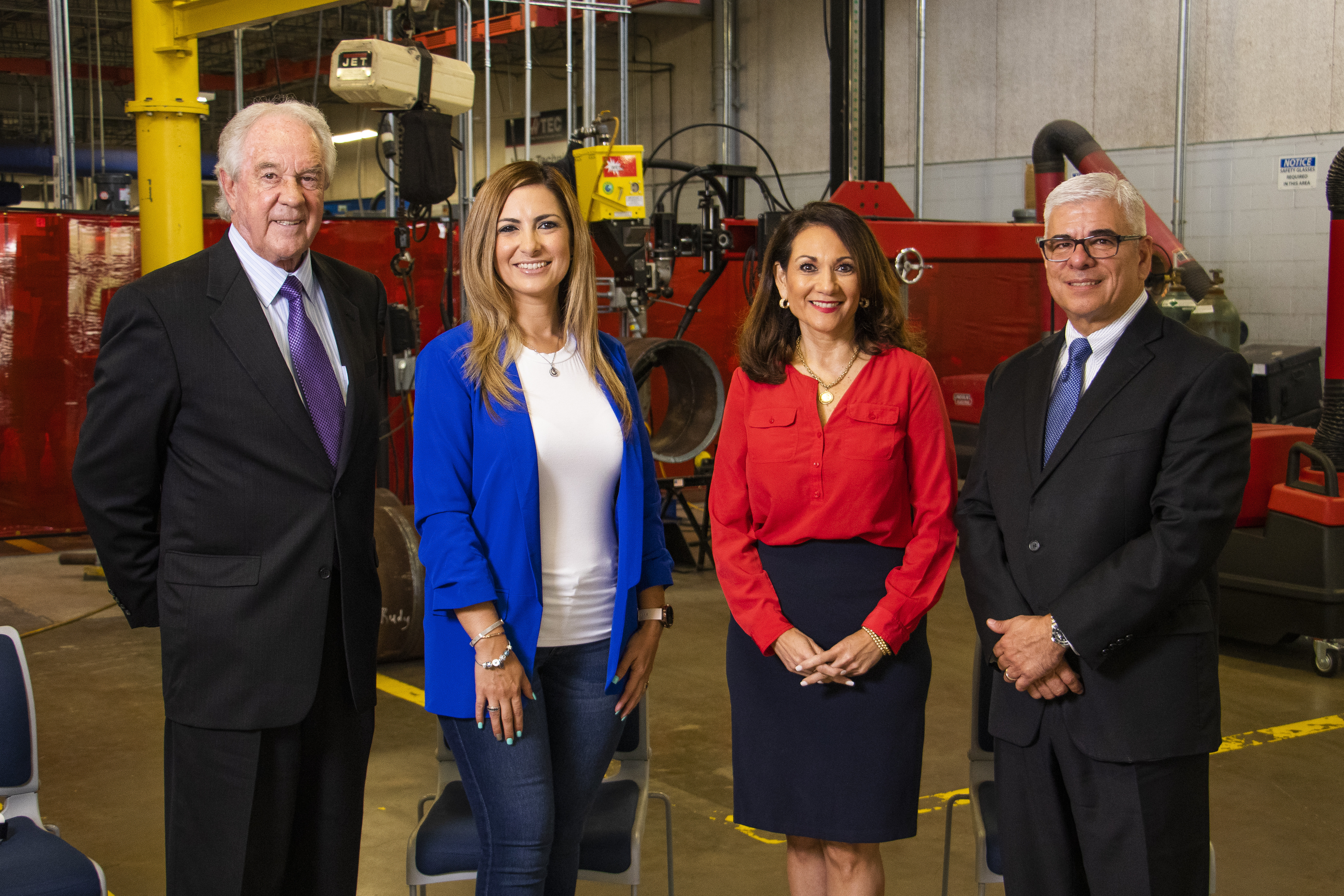Equip Harlingen grant program now accepting applications! Start Here.
Choose Harlingen for Workforce

Harlingen is changing. In fact, the change has been happening for quite some time. The once sleepy community that, for decades, was predominantly driven by agriculture and farming industries, has shifted to new and different industries.
While agriculture is still an important industry in Harlingen, the job market has diversified. This means young people just now entering the workforce have choices beyond what was available to their parents and grandparents.
Educational opportunities have increased and industries that were uncommon decades earlier have come to Harlingen, Brownsville, McAllen, Edinburg, and other South Texas cities, which over time, have sowed the seeds to create a robust workforce.
“We have to be cognizant of what our strengths and assets are, so that we can recruit the right types of companies and the right types of employers,” Raudel Garza, manager and CEO of the Harlingen Economic Development Corporation, said during a recent filming of a Choose Harlingen episode.
This is done through a process called “asset mapping,” where the companies coming to a region are matched up with a quality labor force. Asset mapping has been a process used for years through the Texas Workforce Commission and Workforce Solutions.
For this to be successful, the Harlingen EDC had to determine which industries to focus on, which have included automotive parts manufacturing and metal fabrication, tourism and hospitality, health care, and aerospace.
Some of those organizations include United Launch Alliance, Penn Aluminum International, Valley Baptist Medical Center, and United HealthCare Services.
Of course, the workforce has to be developed through education. That’s where institutions like the University of Texas Rio Grande Valley and Texas State Technical College come into play.
“We see the healthcare industry as one that is growing tremendously across the Rio Grande Valley,” said Veronica Gonzales, who serves as the senior vice president for Community and Government Relations at UTRGV. “We just started a residency program here at Valley Baptist Medical Center in surgery, and, of course, we have others in internal medicine and several others.”
Gonzales said the university is working with other partners, such as the Early College High School, the High School for Health Professions in Harlingen, and TSTC, to ensure they can help the healthcare industry keep growing in the Valley.
“If you’re a talented student and want to pursue a career in medicine, and you meet certain criteria, you will have early admission into the medical school,” Gonzales said. “From the time you get out of high school and start college, we will start to prepare you so you can become a doctor.”
Gonzales added that the goal for all students who come to UTRGV is to ensure they are on the path to a great career no matter which industry they choose.
Like UTRGV, TSTC trains future medical professionals at all 10 of its campuses in Texas. However, the TSTC medical training program is more of a hybrid program that trains students in labs rather than college-style lecture halls.
“Here in Harlingen, we have a very large Allied Health Division,” said Cledia Hernandez, associate vice chancellor for External Relations and Workforce Development at TSTC. “We have programs such as surgical technology, we have an LVN program, and an LVN to RN transition program.”
TSTC also has an EMS/paramedic program and a fully functional dental hygienist clinic that takes appointments for patients in the community, Hernandez said.
TSTC, however, has for decades been known for providing hands-on training and certification for automotive technology, diesel technician, aviation technology, metal fabrication, welding and machinist, and technical fields in high demand within the oil and gas industry.
Many of the students who graduate from these and other programs often turn to Workforce Solutions to help them find the right job.
“The economy here in South Texas as a region is 80 percent in health care, retail, education, and in government,” said Pat Hobbs, executive director for Workforce Solutions in Cameron County. “We have what is called a targeted occupation’s list. We don’t want to spend money on training somebody who isn’t going to make a decent wage, so we sort through the demand occupations — and there are a lot — down to about 40 targeted occupations that will fund. Healthcare jobs are a large part of those.”
Hobbs said Workforce Solutions uses federal funds to train the workforce, which amounts to about $2 million annually.
Those funds have been used to train manufacturers in aerospace and other high-demand industries in the Valley.
“Workforce development and partners in education are a tool in the toolbox of the economic development corporations,” Hernandez said. “Our focus is placement and employment, because (our students) are walking out with the right skill set.”
Watch the full episode here:
